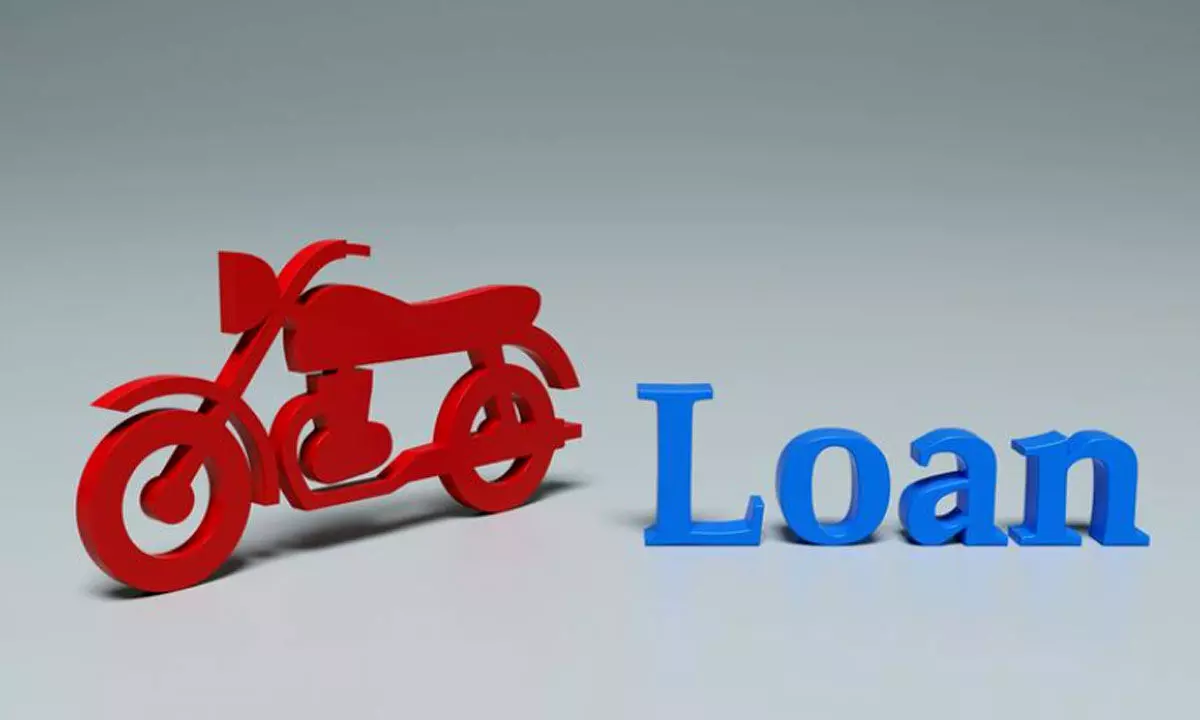NBFC vs. Banks - The Better Two-Wheeler Loan Provider Revealed

Two-Wheeler Loan Provider
According to a report prepared by CRIF for FY 2021, more than 97 percent of the active two-wheeler loans – and consequently, more than 97 percent of the market share – belonged to banks and NBFCs.
According to a report prepared by CRIF for FY 2021, more than 97 percent of the active two-wheeler loans – and consequently, more than 97 percent of the market share – belonged to banks and NBFCs. Individuals in the country rely on banks, NBFCs and captive financiers to purchase two-wheelers. The two-wheeler loan industry in India is projected to surpass USD 12 billion by 2025 from around USD 7.2 billion in 2020 – a compound annual growth rate (CAGR) of more than 11%! Additionally, more than 75 percent of the registered two-wheelers in the country are bought through two-wheeler loans.
These numbers paint a clear picture – banks and NBFCs play an integral role in India's two-wheeler market growth. Private banks and NBFCs offer attractive interest rates and easy application processes. While applying for a bike loan, however, should you choose a public or private bank or an NBFC? We take a closer look at the two-wheeler loans extended by different lenders and which entity offers better loan terms to the applicants.
How are banks different from NBFCs?
First and foremost, it is important to know the differences between banks and NBFCs, especially with regard to two-wheeler loans. The Reserve Bank of India (RBI) regulates both banks and non-banking financial companies (NBFCs). However, the ruling acts differ; banks act in accordance with the Banking Regulation Act, 1949. On the other hand, NBFCs act in compliance with The Companies Act, 1956. This allows NBFCs to be more lenient with their terms and conditions. Banks, however, have to comply with RBI's guidelines.
How does this affect interest rates offered by NBFCs?
As previously mentioned, banks have to conform to the instructions and guidelines provided by the RBI. Thus, the interest they charge on bike loans varies according to the RBI policy rate changes and the corresponding market forces. However, the interest offered by NBFCs is not dictated by the RBI. Instead, their actions are predicated on the competition and other factors, such as the retail prime lending rate (RPLR).
This essentially means that NBFCs, in an effort to provide the best bike loan terms, offer highly competitive interest rates, making them the go-to option for applicants.
Benefits of choosing an NBFC
Apart from getting nominal interest rates, NBFCs extend several other benefits.
Faster processing speeds
Public and private banks are quite stringent when it comes to processing bike loans. They thoroughly review and scrutinise the applicant's creditworthiness, eligibility and other aspects. It is only after reviewing the paperwork and the applicant's eligibility criteria that banks begin the approval process. In contrast, NBFCs are more lenient and prioritise the customer's convenience. This results in quicker approval times and instant loan disbursals.
Credit score
Banks place greater emphasis on the applicant's credit score. As they have to adhere to the norms and RBI's guidelines, they are usually apprehensive about offering bike loans to applicants with low credit scores. To avail of a bike loan from a bank, you must have a good credit score – anything in the region of 750 or above. However, NBFCs are far more accommodating and offer two-wheeler loans to applicants with a credit score of around 600! Furthermore, NBFCs have taken a more dynamic approach by relying on algorithms through machine learning (ML) and artificial intelligence (AI) to determine if an applicant is likely to repay the loan.
Longer repayment tenure
Depending on the banking institution, the repayment period can range from 12 months to 36 months (or, sometimes, 48 months). NBFCs, on the other hand, offer a repayment period of around 60 months (5 years). Certain lending entities also offer a repayment period of 7 years, making it easier to repay the loan. You can use a bike EMI calculator to find the repayment terms (EMI, interest and tenure) that are convenient for you.
Up to 100% financing
NBFCs also offer up to 100% financing of the vehicle's on-road price. This includes supplementary charges such as RTO and insurance premium charges. Banks, on the other hand, typically provide 60-70% of the on-road price of the two-wheeler.
Minimum down payment
You won't have to worry about making a large one-time payment as a down payment while availing of a bike loan from an NBFC. When it comes to banks, however, you need to pay 15 - 30% of the bike's ex-showroom price. You can circumvent this inconvenience by choosing an NBFC to get your bike loan. Using a bike EMI calculator, you can calculate the EMI you have to pay monthly and make a minimum down payment.
NBFCs vs. Banks - Final thoughts
Due to the abovementioned factors, NBFCs enjoy greater popularity and market share than banks. From nominal interest rates to longer repayment periods, NBFCs offer better loan terms, as they don't have to follow strict protocols before granting bike loans. Furthermore, unlike banks, NBFCs do not require lengthy and comprehensive documentation, which significantly reduces processing times. You can also benefit from nominal foreclosure charges and pre-approved two-wheeler finance offers while availing of a bike loan from an NBFC.
One such lending entity that offers highly competitive interest rates, low-cost EMIs and up to 100% funding of the two-wheeler's on-road price is Bajaj Markets. With easy-to-meet eligibility criteria, minimal documentation requirements, quick application process with instant approval and speedy loan disbursals, you can purchase your dream two-wheeler in no time! Simply use a bike EMI calculator to know your preferred repayment terms and apply for a bike loan online.














